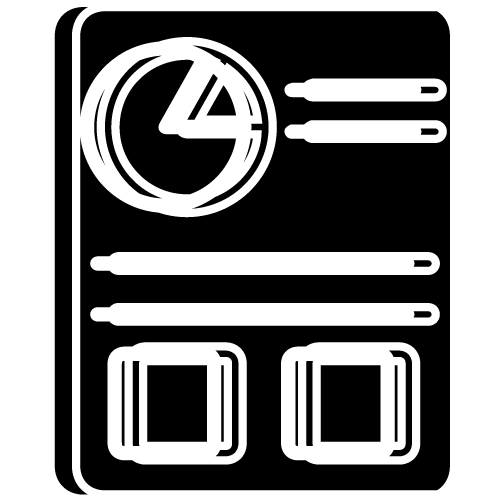Potentials for patients with severe arterial hypertension, by using antihypertensive pharmacotherapy combined with ozone therapy and nasal laser therapy.
DOI:
https://doi.org/10.7203/jo3t.6.7.2022.25998Keywords:
arterial hypertension, antihypertensive drugs, low level laser therapy, nasal laser irradiation, ozone therapy Major Autohemotherapy (MAH) Abstract
Abstract
Background: More people die each year from cardiovascular diseases than from any other cause. Arterial hypertension (AH) is a particularly important public health issue in Mongolia which has one of the highest mortality rates from hemorrhagic stroke in the world. Antihypertensive pharmacological therapy combined by other non-medication therapy is well-studied in patients with mild and moderate AH. However, studies that have investigated combination of low intensity laser irradiation and ozone therapy in patients with severe AH are lacking. The objective of the present work was to develop methods using low intensity laser irradiation therapy (LLLT) combined with major autohemotherapy (MAH) for the patients presenting with AH.
Studies have shown that LLLT is capable of inducing a photobiological response within the cells which modifies the micro and macrovascular response; this accompanies evidence showing the systemic effects even using in nasal laser irradiation (NLI).
Oxygen-ozone therapy exerts a positive effect on the platelet aggregation, cell remodeling, cytoskeletal elements organization and mitochondria structure. Due to O2-O3 therapy is an effective method in hypertension, and it diminishes the hypoxia state of various tissues.
In recent years, scientists have made great progress in the area of pharmacotherapy for patients with AH. Drugs help to achieve the target level of arterial blood pressure, particularly in patients with mild and moderate AH. With a higher degree of AH (severe arterial hypertension – the 3rd degree of arterial hypertension) the effectiveness of pharmacological therapy decreases and to achieve the target level of arterial blood pressure it is necessary to use a combination of all major groups of antihypertensive medicines.
Method and Result: The study was held at Wellness Med Hospital Mongolia since the beginning of 2021 until the end of year. The study included a total of 60 patients of any age (63% of men and 37% of women) having AH associated with coronary heart disease and abnormal blood lipid spectrum. Initially, clinical-instrumental and laboratory examination, blood pressure registration and daily arterial blood pressure monitoring were carried out. Suitable drugs were selected for all the patients. 3 months after starting drug treatment the patients were divided in 2 groups each comprising 30 patients matched for age, sex, severity of clinical conditions, and character. The patients of the first group were prescribed combination with NLI and ozone therapy (MAH) in addition to drugs. For ozone therapy used Ozomed smartline ozone generator by Hansler Medical, Germany. The total dose of ozone to be given at each session will vary according to the general condition of the patient. Intervals from daily to weekly and twice a week. Ten to twelve treatments are considered as one course of treatment. Also, as cycles to be given once or more times per year. It may vary from less than 1000 µg to 3000 µg. This procedure is in line with the Madrid Declaration (ISCO3/QAU/01/03). The ozone concentration in the O2-O3 gas mixture were between 20 µg/ml to 35 µg/ml. The volume of blood to use varies between 50 mL and 100 ml. For NLI therapy we used Semiconductor laser Therapeutic apparatus Model W-001 by Fithope, China. The laser watch with nasal laser irradiation with 650nm (5mW) of lights. Used this equipment same day with Ozone therapy for about 30-40 minutes each time. If AH was higher used the laser therapy longer time.
The second group of patients continued receiving drugs alone. 3 months later, average daily blood pressure (BP), systolic BP and diastolic BP were compared in both groups. Three months after both groups demonstrated a significant decrease in SBP and DBP, but these indicators remained higher than normal and did not reach the target level. Three months after the inclusion of MAH+NLI in the comprehensive treatment, the first group demonstrated a significant decrease in BP (systolic and diastolic), not only in comparison with the initial data, but also with the data observed three months after PT. After 6 months SBP and DBP in the first group were significantly lower compared with those of patients in the second group. The inclusion of MAH+NLI in addition to multicomponent antihypertensive drugs is a promising treatment option for severe AH.
Discussion: Drug therapy is not sufficient for the elimination of cellular-tissue and microcirculatory disorders in case of severe AH, it should be advisable to include MAH+NLI into the multicomponent treatment, and positive changes in the indicators of the 1st group of patients after the inclusion of MAH+NLI are suggestive of it.
The oxygen-ozone therapy and LLLT seem to have no adverse events or side effects. Moreover, it is very cost-effective, as standard treatment costs can be reduced by 25% also.
 Downloads
Downloads
Downloads
Published
How to Cite
-
Abstract420
-
PDF147
Issue
Section
License
Journal of Ozone Therapy applies the Creative Commons Attribution-NonCommercial 4.0 International License (CC BY NC 4.0) license to works we publish.
Under this license, authors retain ownership of the copyright for their content, but allow anyone to download, reuse, reprint, modify, distribute and/or copy the content as long as the original authors and source are cited. No permission is required from the authors or the publishers.
You may not use the material for commercial purposes.
Appropriate attribution can be provided by simply citing the original article, provide a link to the license, and indicate if changes were made.
You may do so in any reasonable manner, but not in any way that suggests the licensor endorses you or your use.




